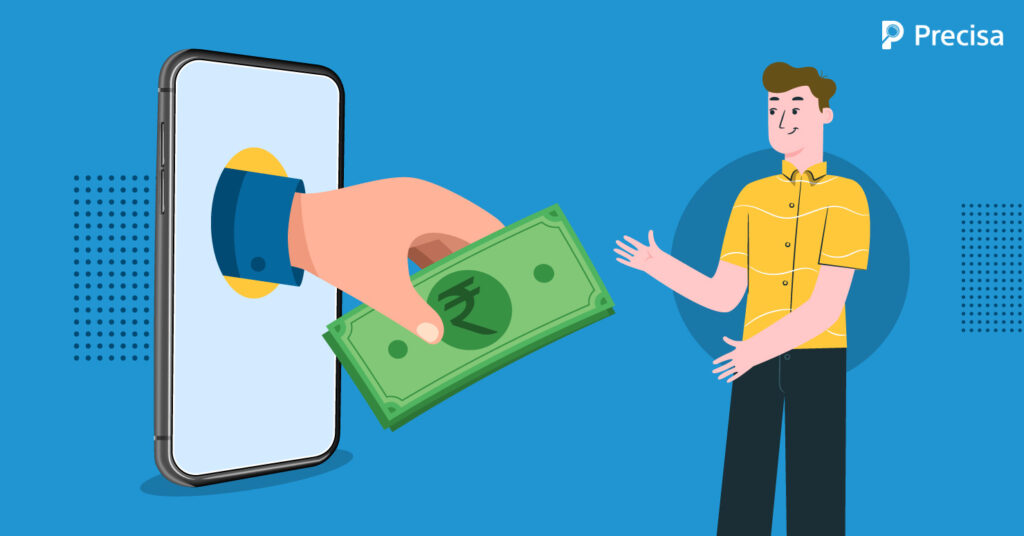How Digital Credit Is Overturning Age-Old Banking Concepts

Consumer credit has seen record growth since the pandemic. Across all income brackets in the country, there has been a sustained upsurge in demand. Moreover, with the rise of the fintech ecosystem in recent years, digital credit has taken off, transforming how loans are procured and disbursed.
Additionally, digital loans’ popularity is attributable to increased smartphone usage, flexible credit ranges, and speedy online transactions.
With customers moving from traditional bank branches to banks in their pockets, learn more about how digital credit revolutionises age-old banking concepts.
The Growth of Digital Lending
Digital lending has skyrocketed since the pandemic. Through its convenience and operational efficiency, digital lending has also changed consumer perceptions.
In addition, process streamlining, paperless automated workflows, and deep analytics-driven credit scoring contribute to customer satisfaction which has added to its growth.
It is also imperative that banks and financial institutions rapidly introduce new products at a price point that customers will pay and at a level that banks can earn reasonable returns.
For instance, many geographies have already adopted real-time payments. In addition, solutions such as buy-now-pay-later (BNPL) and point-of-sale (PoS) credit revolutionise lending and enhance the POS experience. In addition, we’re also seeing tap or scan solutions such as Google Pay and QR codes continue to grow in popularity.
As a result of all these developments, business owners who were previously dependent on cash-based and card-based payments have gained access to BNPL through Fintech innovations. As a result, their cash flows, sales, and profit margins have improved.
In addition to the increased share of e-commerce spending, contactless payments have accelerated, further displacing cash. Therefore, banking has increased financing or credit at checkout due to the growing demand for contactless payments.
What made the digital transition possible?
The overwhelming transition to digital lending in the past few years was possible owing to the following causes:
The opportunity to reach untapped audiences
Providing access to the underserved population has been a massive advantage of digitising financial services. As a result of digital credit, financial inclusion is now fully accessible across all strata of society and geographical locations.
Increased internet connectivity and smartphone adoption rates have enabled banks to reach even into the hinterlands. In addition, automated tools and analytical data assist the banks in determining a person’s creditworthiness and making informed credit decisions.
The changing behaviours of millennials towards digital lending
2020 marked the end of the older behaviour pattern for consumer durables and the onset of a new borrowing pattern with health emergencies at the centre. This is reflected in 24% CARG for the global digital credit platform market by 2028.
Increasing use of credit cards and retail lending are the primary drivers of the growth. Moreover, consumer credit grows faster in most global economies. Digital lending players have a lot to gain by participating in this retail-borrowing boom and tapping into its new audience.
Banks and fintechs have recognised this opportunity by connecting seamlessly with consumers and using data to personalise products and services.
For example, millennials began using digital loans in 2020 to cover their emergency fund needs, such as paying for medical expenses, refinancing their credit cards, or even learning a new online course!
Many digital credit platforms reported a surge to provide customers with trending credit features. This trend is different from years past and is very noticeable and persistent. As a result, digital lending looks bright for the future as we tap into new markets and adapt to changing consumer behaviour!
What’s Next for Digital Credit?
While the repercussions of the pandemic are not yet fully understood, they will likely emerge over time. Although the economy has been struggling during the first two-quarters of FY21, lenders are beginning to see signs of improvement during the last quarters—giving them hope for 2022.
However, the lending industry faces numerous challenges, such as shrinking profits, defaults, and liquidity constraints.
Credit offtake and loan collections have been severely affected, with record-low credit quality and asset sourcing. So how can this digital revolution turn things around?
With digital banking gaining traction and consumers showing interest in digital payments, financial institutions must adopt digital to remain competitive.
Finally, if anything, we are in a revolutionary stage of digital credit. Hence, it is crucial that financial institutions reassess and rethink their strategy and what their business stands for.
Financial institutions’ transformation starts with defining the scope of innovation, for which operations need a change and channels, business models, and customer service needs reassessment.
So, are you ready to take a step further? Precisa can provide a modern suite of bank statement analysis software suites to enable sound lending decisions for lenders and banks.
Now, you can invest more time and resources into revolutionising the age-old banking/lending processes while Precisa sorts out your lending complexities. For ways to up your digital credit, reach us at contact@Precisa.in



